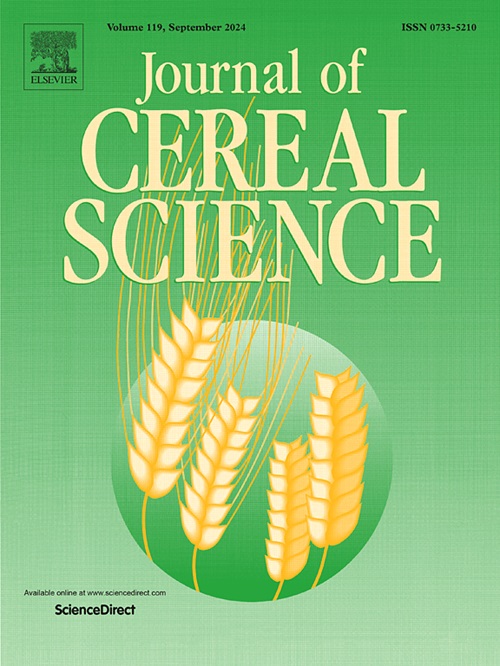Study on the improvement of Rye bread quality by bacterial Laccase derived from Streptomyces coelicolor
IF 3.9
2区 农林科学
Q2 FOOD SCIENCE & TECHNOLOGY
引用次数: 0
Abstract
Rye bread is gaining increasing attention due to its health benefits, although its poor gluten structure remains a notable drawback. While many studies have focused on the role of fungal laccase in improving bread quality, research on the application of bacterial laccase in this area is limited. Compared with most fungal laccases, bacterial laccases with a wide pH range and good thermal stability offer significant advantages in bread baking. This study aimed to investigate the effect and mechanism of action of SLAC-T (truncated form of full-length sequence), a bacterial laccase derived from Streptomyces coelicolor, in rye bread. It was discovered that SLAC-T has a molecular weight of 32 kDa, a specific enzyme activity of 81.6 U/mg, and maintains high activity at high temperatures of 60–80 °C and pH 4.0–8.0. Texture and quality analysis revealed that at an SLAC-T addition level of 6U, the hardness, chewiness, and cohesiveness of rye bread were significantly reduced. Specifically, these properties decreased to 4161.4 g, 2251.6 g, and 1240.7 g, respectively, compared to the control values of 4161.3 g, 2251.6 g, and 1240.7 g. At the same time, the specific volume of bread increased by 0.28 mL/g relative to the control 1.93 mL/g, reaching a maximum value of 2.21 mL/g. This study primarily explores the mechanism by which SLAC-T improves the quality of rye bread, providing a scientific basis for the use of bacterial laccase in bread production.

利用彩色链霉菌漆酶改善黑麦面包品质的研究
黑麦面包因其对健康的益处而受到越来越多的关注,尽管它的麸质结构差仍然是一个明显的缺点。许多研究都集中在真菌漆酶对面包品质的改善作用上,而细菌漆酶在这方面的应用研究却很有限。与大多数真菌漆酶相比,细菌漆酶具有广泛的pH范围和良好的热稳定性,在面包烘焙中具有显著的优势。摘要本研究旨在探讨一种源自色链霉菌的细菌漆酶SLAC-T在黑麦面包中的作用及其机制。结果表明,SLAC-T的分子量为32 kDa,比酶活性为81.6 U/mg,在60 ~ 80℃、pH 4.0 ~ 8.0的高温条件下保持较高的活性。质地和品质分析表明,当SLAC-T添加量为6U时,黑麦面包的硬度、嚼劲和黏结性均显著降低。具体来说,与对照组的4161.3 g、2251.6 g和1240.7 g相比,这些特性分别下降到4161.4 g、2251.6 g和1240.7 g。与此同时,面包的比容比对照1.93 mL/g增加了0.28 mL/g,达到最大值2.21 mL/g。本研究主要探讨了SLAC-T改善黑麦面包品质的机理,为细菌漆酶在面包生产中的应用提供科学依据。
本文章由计算机程序翻译,如有差异,请以英文原文为准。
求助全文
约1分钟内获得全文
求助全文
来源期刊

Journal of Cereal Science
工程技术-食品科技
CiteScore
7.80
自引率
2.60%
发文量
163
审稿时长
38 days
期刊介绍:
The Journal of Cereal Science was established in 1983 to provide an International forum for the publication of original research papers of high standing covering all aspects of cereal science related to the functional and nutritional quality of cereal grains (true cereals - members of the Poaceae family and starchy pseudocereals - members of the Amaranthaceae, Chenopodiaceae and Polygonaceae families) and their products, in relation to the cereals used. The journal also publishes concise and critical review articles appraising the status and future directions of specific areas of cereal science and short communications that present news of important advances in research. The journal aims at topicality and at providing comprehensive coverage of progress in the field.
 求助内容:
求助内容: 应助结果提醒方式:
应助结果提醒方式:


